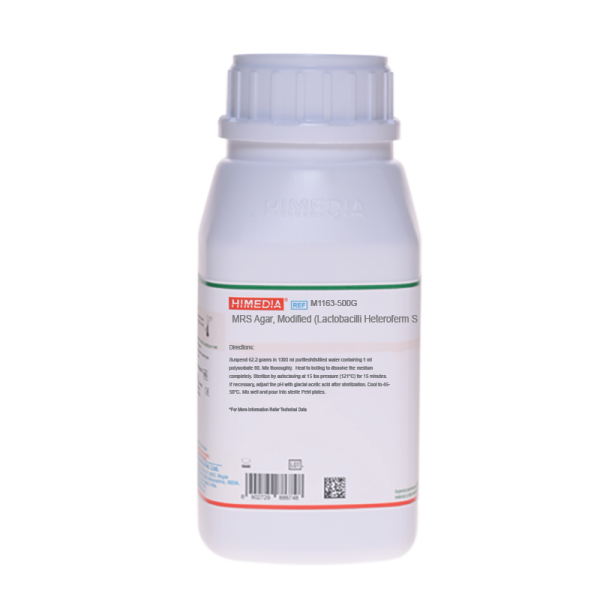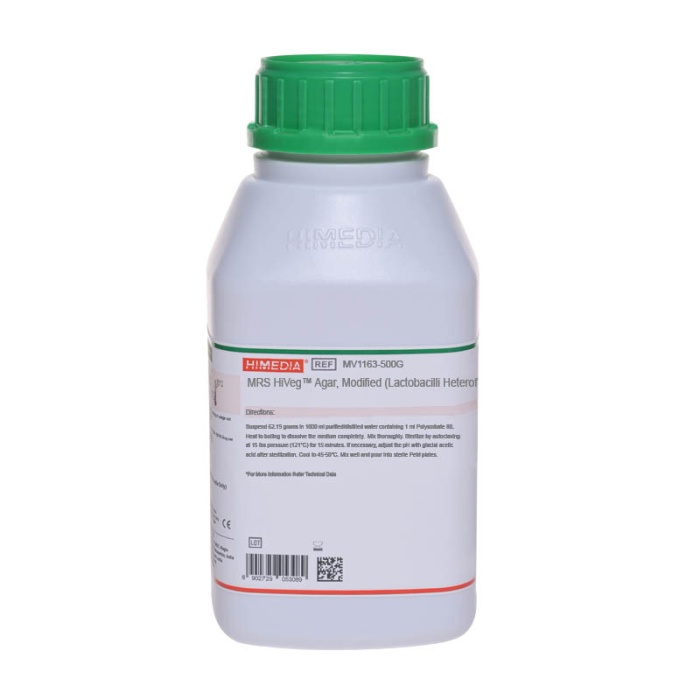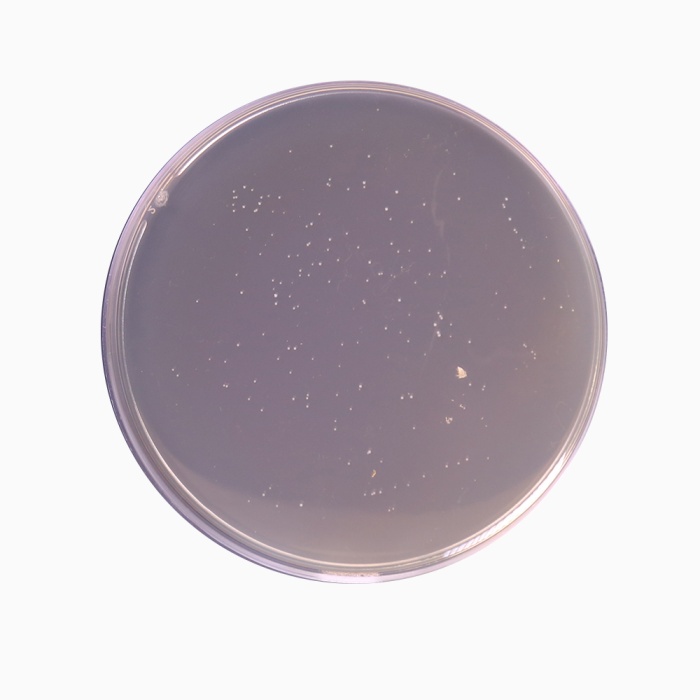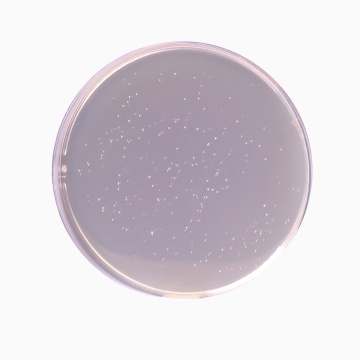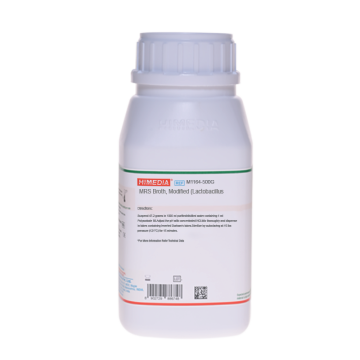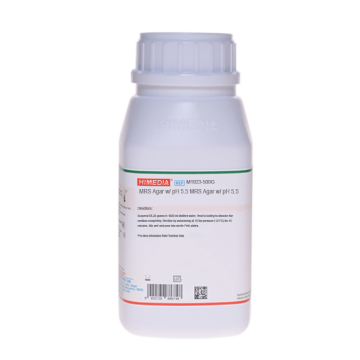 Your enquiry has been submitted
Your enquiry has been submitted
MRS Agar, Modified (Lactobacilli Heteroferm Screen Agar)
Intended Use
Recommended for the cultivation of Plesiomonas shigelloides from food samples in accordance with APHA.
Composition
| Ingredients | Gms/Litre |
|---|---|
| Gelatin | 120.000 |
| Yeast extract | 5.000 |
| Disodium hydrogen phosphate | 5.000 |
| Inositol | 10.000 |
| Phenol red | 0.050 |
Final pH (at 25°C): 7.4±0.2
Formula adjusted, standardized to suit performance parameters
Directions
Suspend 140.05 grams in 1000 ml warm purified/distilled water. Heat to boiling to dissolve the medium completely. Dispense in tubes. Sterilize by autoclaving at 115°C (10 lbs pressure) for 15 minutes.
Principle And Interpretation
Plesiomonas shigelloides, an opportunistic pathogen is commonly implicated in human waterborne diarrhoea. It is mainly isolated from fresh water, fresh water fish, and shellfish and from many types of animals including goats, cattle, swine, dogs, cats, monkeys, vultures, snakes and toads. Human infections attributed to P.shigelloides are almost exclusively restricted to two clinical settings (1). The most common presentation is a watery diarrheal illness most often found in individuals with a history of fresh water contact, seafood consumption, exposure to amphibia or reptiles or travel to developing countries. The second well-recognized syndrome associated with P.shigelloides is septicemia, often accompanied by meningitis (5).
Inositol Gelatin Medium is recommended for the cultivation of P.shigelloides from food as recommended by APHA (6). Yeast extract serves as source of B-complex nutrients. Disodium phosphate buffers the medium. P.shigelloides utilizes inositol for metabolic activity, producing only acid and no gas. This acid is detected by the phenol red indicator, which changes its colour from red to yellow. P.shigelloides also do not hydrolyze gelatin which acts as a solidifying agent.
Type of specimen
Food samples
Specimen Collection and Handling
Samples, depending upon consistency and expected numbers are diluted and directly streaked on PL Agar (M1173) and Inositol Brilliant Green Bile Agar (M574) (4). Another 10 grams of the sample is inoculated into 90 ml of Tetrathionate Broth Base(M032). Plates are incubated at 35-37°C and broth at 40°C. Following an incubation of 24 hours, presumptive P.shigelloides colonies are inoculated into TSI slants (M021) and Inositol Gelatin Medium Butts (M1161). Growth from M032 is streaked onto PL Agar (M1173) and BGBA (M574).
Warning and Precautions
Read the label before opening the container. Wear protective gloves/protective clothing/eye protection/face protection. Follow good microbiological lab practices while handling specimens and culture. Standard precautions as per established guidelines should be followed while handling specimens. Safety guidelines may be referred in individual safety data sheets.
Limitations
- Individual organisms differ in their growth requirement and may show variable growth patterns on the medium.
Performance and Evaluation
Performance of the medium is expected when used as per the direction on the label within the expiry period when stored at recommended temperature.
Quality Control
Appearance: Light yellow to pink homogeneous free flowing powder
Gelling: Firm, comparable with 12.0% Gelatin gel
Colour and Clarity of prepared medium: Red coloured, clear gel forms in tubes as butts
Reaction: Reaction of 14.0% w/v aqueous solution at 25°C. pH : 7.4±0.2
pH: 7.20-7.60
Cultural Response: Cultural characteristics observed after an incubation at 35-37°C for 18-24 hours.
| Organism | Inoculum (CFU) | Growth |
|---|---|---|
| Plesiomonas shigelloides ATCC 14029 | 50-100 | luxuriant |
Storage and Shelf Life
Store between 10-30°C in a tightly closed container and the prepared medium at 15-25°C. Use before expiry date on the label. On opening, product should be properly stored dry, after tightly capping the bottle in order to prevent lump formation due to the hygroscopic nature of the product. Improper storage of the product may lead to lump formation. Store in dry ventilated area protected from extremes of temperature and sources of ignition. Seal the container tightly after use. Product performance is best if used within stated expiry period.
Disposal
User must ensure safe disposal by autoclaving and/or incineration of used or unusable preparations of this product. Follow established laboratory procedures in disposing of infectious materials and material that comes into contact with sample must be decontaminated and disposed of in accordance with current laboratory techniques (2,3).
References
- Brenden R. A., Miller M. A., and J. M., Janda, 1988, Rev. Infect. Dis. 10:303-316.
- Isenberg, H.D. Clinical Microbiology Procedures Handbook 2nd Edition.
- Jorgensen, J.H., Pfaller, M.A., Carroll, K.C., Funke, G., Landry, M.L., Richter, S.S and Warnock., D.W. (2015) Manual of Clinical Microbiology, 11th Edition. Vol. 1.
- Miller M. L and Koburger J. A., 1985, J. Food Prot., 48:449.
- Murray P. R., Baron J. H., Pfaller M. A., Jorgensen J. H. and Yolken R. H., (Eds.), 2003, Manual of Clinical Microbiology, 8th Ed., American Society for Microbiology, Washington, D.C.
- Salfinger Y., and Tortorello M.L., 2015, Compendium of Methods for the Microbiological Examination of Foods, 5th Ed., American Public Health Association, Washington, D.C.
| Product Name | MRS Agar, Modified (Lactobacilli Heteroferm Screen Agar) |
|---|---|
| SKU | M1163 |
| Product Type | Regular |
| Physical Form | Powder |
| Origin | Animal |
| Packaging type | HDPE |
| References | 1.Vanderzant C. and Splittstoesser D. F., (Eds.), 1992, Compendium of Methods for the Microbiological Examination of Foods,3rd Ed., APHA, Washington, D.C.2.Smittle R. B. and Flowers R. M., 1982, J. Food Protection, 45:977.3.DeMan J. D., Rogosa M. and Sharpe M. E., 1960, J. Appl. Bacteriol.,23:130. |
| Customized Product Available | No |



